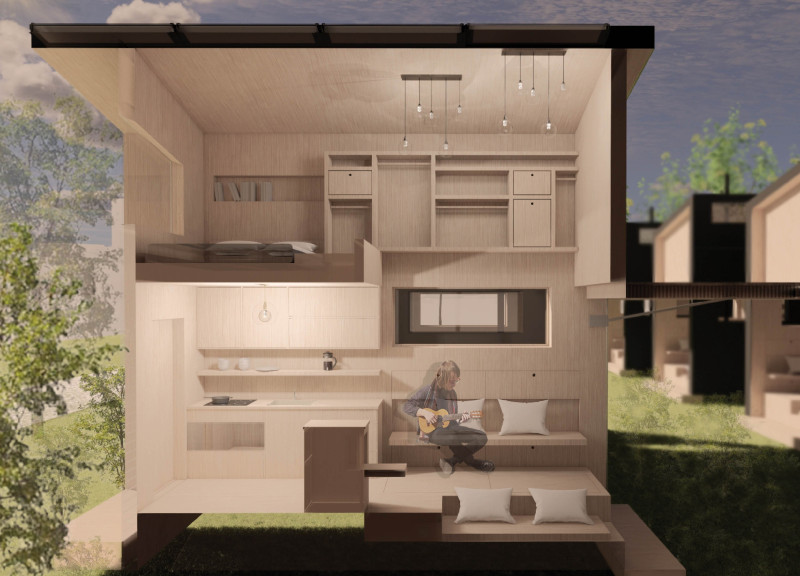5 key facts about this project
The CHRYSALIS housing project is located in Vancouver, Canada. It provides a structured approach to addressing the issue of homelessness. The design is based on the natural process of a caterpillar transforming into a butterfly. This concept reflects a journey from a state of vulnerability to one of independence and stability. The project is divided into three phases: PUPA, ECLOSION, and BUTTERFLY, each representing a step in the path toward self-sufficiency.
PUPA is the first phase, offering transitional housing for individuals experiencing homelessness. This stage ensures easy access to important services that promote employment and community participation. The design focuses on creating a supportive environment. It is arranged in a way that enhances functionality while helping residents to recover and regain their independence.
Once individuals reach the ECLOSION phase, they begin to earn personal income. At this stage, occupants start making low rental payments, which encourages them to take an active role in managing their finances. The design of this phase emphasizes flexibility. Spaces can adapt to the evolving needs of the residents, providing a practical solution for various life circumstances.
In the BUTTERFLY phase, residents achieve homeownership within government-managed plots designated for long-term development. This stage allows residents more freedom, as they can move their homes to different locations if needed. Such mobility ensures that residents are not confined by fixed structures, enhancing their quality of life in the urban setting.
Sustainability is an integral aspect of CHRYSALIS. Features like rain catchment systems and solar water heaters contribute to a lower cost of living for residents. Solar panels harness renewable energy that can be used or sold back to the grid, promoting environmental responsibility. The design allows for a reduced ecological footprint, ensuring that the living environment is not only functional but also responsible.
The CHRYSALIS project beautifully combines support and sustainability. The design encourages residents to innovate in their use of resources. This focus on integration fosters a sense of community ownership, allowing individuals to move from reliance on support systems to independent living. Each detail contributes to a supportive and sustainable living environment, making it a thoughtful solution to complex social challenges.




















































